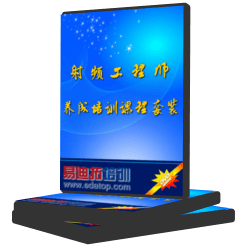如何测量得到介质的介电常数。
现在有许多基板材料,但是都不知道介电常数,哪位大神知道如何测量。
目前实验室有 矢量网络分析仪,可以加工并测量PCB(已知介电常数,损耗正切值和厚度)微带线滤波器。
我PhD论文里关于这个方面的引用,最后用的是第57个Barry的那个方案,测到数据后用MATLAB按照他的公式计算。金工工艺水平对有效测量频率的影响非常大,用他文献里一样的带状线,当时学校金工作坊的水平只能测到2.5 GHz。后来用同轴线来测就可以测到5.5 GHz。
[49] A. M. Nicolson, and G. F. Ross, “Measurement of the intrinsic properties of materials by time domain techniques’’, IEEE Trans. Instrum. Meas., Vol. 19, No. 4, pp. 377-382, Nov. 1970
[50] Deepak K. Ghodgaonkar, Vasundara V. Varadan, and Vijay K. Varadan, “A Free-Space Method for Measurement of Dielectric Constants and Loss Tangents at Microwave Frequencies”, IEEE Trans. Instrum. Meas., Vol. 38, No. 3, pp. 789-793, Jun. 1989
[51] Deepak K. Ghodgaonkar, Vasundara V. Varadan, and Vijay K. Varadan, “Free-Space Measurement of Complex Permittivity and Complex Permeability of Magnetic Materials at Microwave Frequencies”, IEEE Trans. Instrum. Meas., Vol. 39, No. 2, pp. 387-394, Apr. 1990
[52] N. Tamyis, A. Ramli, and Deepak K. Ghodgaonkar, “Free space measurement of complex permittivity and complex permeability of magnetic materials using open circuit and short circuit method at microwave frequencies”, Proc. Student Conference on Research and Development, pp. 394-398, Shah Alam, Malaysia, 16-17 Jul. 2002
[53] Chriss A. Jones, “Permittivity and Permeability Measurements Using Stripline Resonator Cavities - A Comparison”, IEEE Trans. Instrum. Meas., Vol. 48, No. 4, Aug 1999
[54] F. I. Shimabukuro, S. Lazar, M. R. Chernick, and H .B. Dyson,“A Quasi-Optical Method for Measuring the Complex Permittivity of Materials,” IEEE Trans. Microwave Theory Tech., Vol. MTT-32, No. 7, pp. 659–665, Jul. 1984
[55] Linfeng Chen, C. K. Ong, and B. T. G. Tan, “Amendment of Cavity Perturbation Method for Permittivity Measurement of Extremely Low-Loss Dielectrics”, IEEE Trans. Instrum. Meas., Vol. 48, No. 6, Dec. 1999
[56] William B. Weir, “Automatic measurement of complex dielectric constant and permeability at microwave frequencies”, Proc. IEEE, Vol. 62, No. 1, pp.33-36, Jan. 1974
[57] Walter Barry, “A Broad-Band, Automated, Stripline Technique for the Simultaneous Measurement of Complex Permittivity and Permeability”, IEEE Trans. Microwave Theory Tech., Vol. MTT-34, No. 1, Jan.1986
[58] M. Kamarei, N. Daoud, R. Salazar, and M. Bouthinon, “Measurement of complex permittivity and permeability of dielectric materials placed on a substrate”, Electronics Letters, Vol. 27, Iss. 1, pp. 68-70, 3 Jan. 1991
[59] N. E. Belhadj-Tahar, A. Fourrier-Lamer, and H. De Chanterac, “Broad-band simultaneous measurement of complex permittivity and permeability using a coaxial discontinuity”, IEEE Trans. Microwave Theory Tech., vol. 38, no. 1, Jan. 1990
[60] H. Alenkowicz, and B. Levitas, “Time Domain Measurement of Complex Permittivity and Complex Permeability of Materials”, 14th International Conference on Microwaves, Radar and Wireless Communications, Vol. 1, pp.302-305, 20-22 May 2002
[61] Patrick Queffelec, Philippe Gelin, Jacek Gieraltowski and Jean Loaec, “A Microstrip Device for the Broad Band Simultaneous Measurement of Complex Permeability and Permittivity”, IEEE Trans. Mag., Vol. 30, No. 2, Mar. 1994
如果你可以搜索IEEE Explorer,大把大把的文献。
有一种方法,原理是这样的:
腔体内介质为真空和填充介质时谐振频率不同,
依据这一点,就可以设计实验来测量,
当然你设计的实验可以先在CST中仿真一下。
这种方法还算比较成熟,
在百度上找到一篇国内的学位论文,供你参考:
http://www.docin.com/p-342285585.html
这个就是Perturbation,上面的第55个文献就是。不过10年前的文献里Perturbation还不能同时得到permittivity和permeability的实部虚部四个参数。
需要回复才能看到
对已均匀各向同性的材料,可以先测量折射率,然后求得,
谐振腔方法
xx谢谢
申明:网友回复良莠不齐,仅供参考。如需专业解答,请学习本站推出的微波射频专业培训课程。
上一篇:脉冲功放 低温脉冲问题
下一篇:怎么让喇叭天线的波束偏离轴向?

